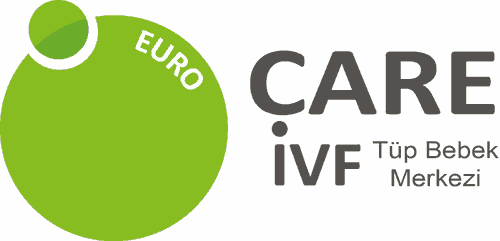
Fertility science is complicated. There are so many factors involved and so many things to consider. If you want to decode your own fertility — regardless of your future family plans, ovarian reserve is a good place to start.
In this guide, you can find all information to understand your fertility through ovarian reserve testing so you can make informed decisions about your future.
Correlation between ovarian reserve & fertility
Every woman is born with a fixed supply of eggs in her ovaries. This is called “ovarian reserve”. The stockpile of eggs determines a woman’s length of reproductive lifespan and her fertility potential.
Being genetically influenced, ovarian reserve varies greatly from woman to woman. Some women might have a greater ovarian reserve (and a longer reproductive span), while others may run out of eggs earlier in life. This, along with other factors, may be the reason why there’s a great variation in fertility among women of the same age.
The pathway of a female egg
The ovaries are filled with thousands of follicles, which are small fluid structures where immature eggs grow. To become available for fertilisation, an immature egg (also called oocyte) must go through a complex 90-day process of maturation.
Each month around 10 oocytes start the journey to maturity, but only one (called a dominant follicle) will be released during ovulation. After ovulation, the mature egg is waiting in the fallopian tube ready to be fertilised by sperm.
Once fertilised, the egg (now called an embryo) will attach to the uterine wall, a process known as implantation, where it will stay until birth. If fertilisation doesn’t occur, the ovulated egg will start to disintegrate 12-24 hours after being released. This change will make oestrogen and progesterone production to stop, the uterine lining to shed and vaginal bleeding to begin (menstruation).
Age-related fertility decline
One thing all women have in common is that their egg supply gradually decreases over time. By the age of 35, women will have approximately 10% of their initial follicular pool at birth and this number will continue to decline steeply from that point onwards.
No treatment can prevent or reverse the effects of biological and ovarian aging. However, there are simple steps you can take to stay ahead of these natural changes in your fertility.
Four ways to measure egg count
To determine your reproductive potential and your risk of infertility, you will have several screening tests that measure the following:
- Anti-Mullerian hormone (AMH)
- Follicle-stimulating hormone (FSH)
- Oestradiol (E2)
- Antral follicle count (AFC)
AMH: Indicator of reproductive potential
Anti-Mullerian hormone (AMH) plays an important role in the oocyte development and the growth of a dominant follicle for ovulation. As a direct product of the follicular activity, AMH provides an accurate measurement of a woman’s egg supply. AMH also plays an important role in:
- Predicting menopause
- Diagnosing ovarian disorders (such as polycystic ovary syndrome, premature ovarian insufficiency and early menopause)
- Monitoring patients with ovarian cancer
- Investigating the causes of absent menstruation in adolescent girls
How is AMH measured?
AMH level is measured using a blood test, which can be done either at a local laboratory or at home on any day of your menstrual cycle — even while on birth control. In-lab blood testing involves collecting venous blood specimens while home-based options collect a sample using a finger-prick device.
At-home AMH tests are not a substitute for seeing a doctor. Always schedule a follow-up appointment with a doctor or a fertility specialist to understand whether your AMH level is in the normal range.
FSH: The trigger of egg maturation
Follicle-stimulating hormone (FSH) stimulates follicular growth and development. Unlike AMH, FSH progressively increases over time until it reaches over 40 mIU/mL at the time of menopause. This age-associated increase happens as a result of the egg loss, making the ovaries less responsive to the effects of FSH hormone. As one of the main hormones secreted by the pituitary gland, FSH also provides good insight into how well the hypothalamic-pituitary-gonadal (HPG) axis is functioning.
How is FSH tested?
Testing is performed on day 3 of the menstrual cycle when a higher amount is released to ensure the continued growth of a group of ovarian follicles. In women with regular cycles, FSH can predict a poor response of the ovaries only at very high levels, and hence will be helpful as a screening test for counselling purposes. Day-3 FSH levels also provide valuable insights into a woman’s ovulation and menstruation patterns. Combined with other markers, it can be useful in counselling patients prior to starting fertility treatment.
E2: The hormone for pregnancy
Oestradiol is another hormone produced by granulosa cells of the ovarian follicles. It’s an important indicator of follicular activity, though a less reliable marker compared to AMH due to its fluctuation during a menstrual cycle.
Through its mechanism of action on endometrial (uterine) tissue, oestradiol prepares the uterine lining (endometrium) for a potential pregnancy. It stimulates the thickening of the endometrial wall where the fertilised egg (embryo) will attach and grow. For implantation to be successful, the endometrium must be at least 8 mm thick.
As part of the pregnancy hormone support in IVF treatments, oestradiol supplements are also used prior to embryo transfer to encourage embryo implantation.
How is oestradiol measured?
Oestradiol is assessed using a blood test on day 3 of the menstrual cycle. Fasting prior to the test is not required. However, if you are taking birth control, inform your doctor as some contraceptive drugs may alter your hormone levels.
Antral follicle count (AFC)
Follicles that contain an oocyte surrounded by a single layer of granulosa cells are called primordial follicles. Through a multi-step process, these follicles develop into antral follicles. The progression of small primordial follicles into large preovulatory follicles (called Graafian follicles) is known as folliculogenesis. When they range from 2mm to 8mm, antral follicles become easily detectable, measured and counted.
How are antral follicles checked?
To determine the size of a woman’s follicular pool, a transvaginal ultrasound scan is performed on day 3-5 of her menstrual cycle. This painless, non-invasive procedure creates high-quality images of your internal organs, including the ovaries.
The amount of follicles in the ovaries varies from woman to woman and from month to month. Since they are prone to changes over time, antral follicle counts are always considered in the context of age. Below is a chart showing the average follicle count by maternal age:
| Age range | Average AFC | Lowest AFC | Highest AFC |
| 25-34 | 15 | 3 | 30 |
| 35-40 | 9 | 1 | 25 |
| 41-46 | 4 | 1 | 17 |
In addition to measuring your egg supply, the ultrasound scan can help your doctor to detect abnormalities in the fallopian tubes, uterus and ovaries, and to diagnose reproductive disorders (like polycystic ovary syndrome, premature ovarian insufficiency and diminished ovarian reserve).
What can ovarian reserve testing tell you?
Ovarian reserve screening plays a crucial part in assessing female fertility at any given age. With the help of ovarian reserve tests, women can understand their reproductive potential and take proactive steps to promote or protect their fertility.
In addition to assessing your fertility potential, ovarian reserve tests also determine whether ovulation is normal. Since the lack of ovulation (anovulation) can sometimes be asymptomatic (no symptoms), it can be verified only through hormone testing.
For those seeking egg/embryo freezing, ovarian testing can help a doctor decide if their egg count is appropriate for their age. In the context of fertility treatment, it can determine the number of follicles that can be stimulated by medications and the number of eggs expected to be retrieved in IVF treatments. This is important because the number of eggs produced in IVF cycles directly correlates with pregnancy success rates. If sufficient eggs are not obtainable, the cycle may be cancelled and the patient will need to wait until the next month.
Abnormal hormone levels during your treatment cycle can also warn against ovarian hyperstimulation syndrome (OHSS), a serious medical condition which happens as a result of ovarian-stimulation medication side effects. OHSS is associated with abdominal pain, bloating, nausea, shortness of breath, and must be reported immediately.
Ovarian reserve assessment limitations
The number of eggs can tell you much about the state of your fertility, but this presents only one side of the fertility equation. A few other factors may be at play, like genetics, egg quality, lifestyle, environmental impact and medical history.
Ovarian reserve tests also don’t tell if you are going to conceive or why you can’t conceive. That’s why you should consider them as complementary tools in your fertility evaluation.
Egg quality: The main factor for conception
A large pool of eggs doesn’t guarantee conception. Some women may have a low ovarian reserve and still have good chances of getting pregnant. On the other hand, women with PCOS may encounter difficulty conceiving despite their high ovarian reserves.
The quality of your eggs is a more important factor that determines your ability to conceive. It represents the egg’s potential to result in a healthy pregnancy and a healthy baby.
Egg quality over time
Just like egg quantity, egg quality also declines with advancing maternal age. The quality of your eggs starts to decrease after the age of 35. Older eggs tend to produce more errors in their DNA during cell division. Once their DNA is degraded, eggs cannot become healthy again, which is why they lose the ability to make a healthy baby. This, in turn, increases the risk of miscarriage and pregnancy complications.
Egg quality is also important in assisted reproductive treatments like IVF. Women over the age of 35 with abnormal test results have a lower chance of conceiving. This group of patients is usually advised to have IVF with donated eggs/embryos.
How is egg quality determined?
While chronological age is associated with a reduction in oocyte quality, a woman’s age is not the most accurate indicator of her egg health. Currently, there is no test for egg quality, and the only way to determine how healthy your eggs are is to estimate your egg count. The greater this number, the higher your chances of having good-quality eggs.
Other fertility factors
Medical conditions
Certain medical conditions can cause an alteration of the ovarian function, leading to ovarian reserve depletion or ovarian dysfunction and subsequent infertility. Common reproductive disorders include:
- Polycystic ovary syndrome (PCOS)
- Premature ovarian insufficiency (POI)
- Diminished ovarian reserve (DOR)
- Early menopause
Certain treatments like cancer treatment (e.g. chemotherapy, radiation therapy) and surgeries (e.g. ovarian drilling, laparoscopic ovarian excision, cystectomy) can also contribute to the exhaustion or deterioration of the ovarian follicular pool.
Lifestyle choices
Certain lifestyle practices may negatively affect female fertility. These include:
- Smoking
- Immoderate alcohol drinking
- Excessive caffeine intake
- Insufficient sleep
- Poor nutrition/unhealthy eating habits
- Unhealthy body weight
- Inadequate/excessive physical activity
- Prolonged physical/emotional stress
- Environmental and occupational exposure to toxins
Take a step today on your fertility path!
Ovarian reserve tests are not absolute indicators of fertility, but abnormal hormone levels mean there is an underlying health problem. If you’re pursuing fertility treatment, ovarian reserve tests can predict your response to ovulation-stimulating medications and your chances of treatment success.
Reproductive health and hormone levels are complex and can be best understood only with the guidance of a fertility expert. If you want to learn more about your fertility and your chances of getting pregnant via IVF, schedule a FREE online video consultation with an EuroCARE IVF fertility specialist, and stay on top of your fertility health!
